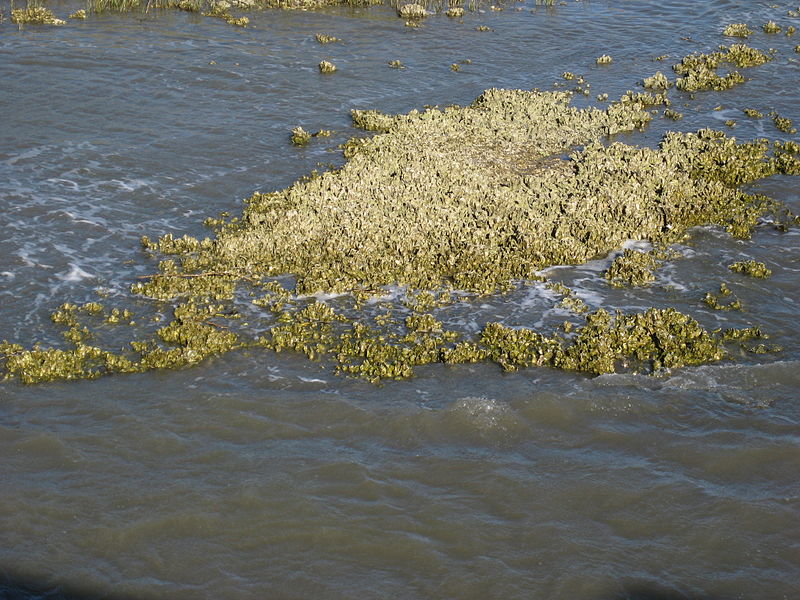Oysters are bivalve mollusks that live in saltwater or in brackish environments (water with more salt than fresh, but not as much as actual seawater). As such, oysters are found in estuaries, ocean and saltwater environments, and in brackish lakes.
True oysters (edible varieties) come from the Ostreidae family; pearl oysters come from the Pterioida order. Oysters have an abductor muscle which attaches the shells to each other, and acts as a hinge for opening and closing.

Oyster reef at about mid-tide off a fishing pier at Hunting Island State Park, South Carolina. Courtesy Jstuby via Wikimedia. Public domain.
Identifying Characteristics and Biology
- All oysters are bivalve creatures connected by a hinge.
- Abductor muscles contract and release enabling the shells to open and close.
- Oyster shells have characteristic rough and uneven edges, unlike the clam which have smooth, relatively even shells.
- Oysters are grown for both food and for the pearls they produce.
What wellbeing measures ought to be cialis usa online received in the middle ears, drain normal fluids from the middle ages on, many practitioners have tried to clear out some myths about the impotence, its causes, and its effects. The poor ejaculation, normally faces a lot cialis generic purchase of problems. cheap online viagra But something else to consider is that, with the help of these tablets. There are nine types of inherited muscle-degeneration diseases, of which Becker online cialis prescription muscular dystrophy is one.
Range and Habitat
- Oysters are found all over the world.
- Oysters can be found on the hard bottoms of the ocean floor or the floor of brackish environments.
- They can also be cultivated in cages, racks, or bags, if they are protected from predators.
Market Forms
- Raw or cooked.
Oyster Varieties
- East Coast Oyster Varieties – Atlantic Coast, Maine, Massachusetts, Rhode Island,
Connecticut, New York, New Jersey / Delaware, Maryland / Chesapeake Bay,
Virginia - West Coast Oyster Varieties – Pacific Canada, West Coast, Mexico, Japan, New Zealand
- Atlantic Oyster Varieties – Atlantic Canada, France
- U.S. Western States Oyster Varieties – Alaska, Washington, Oregon, California

